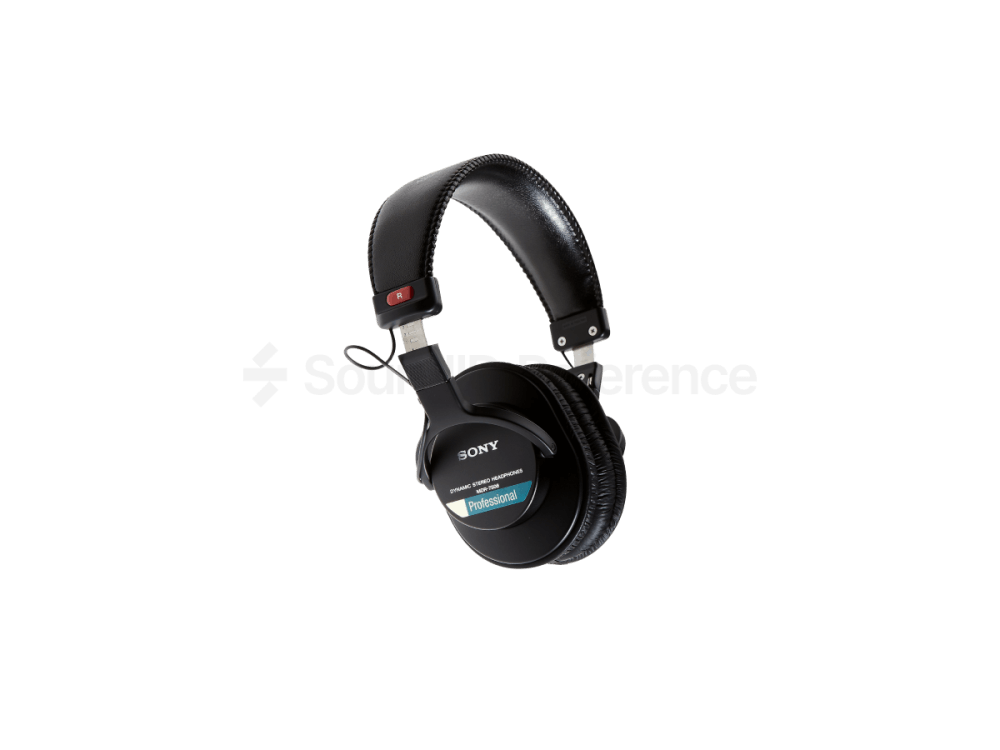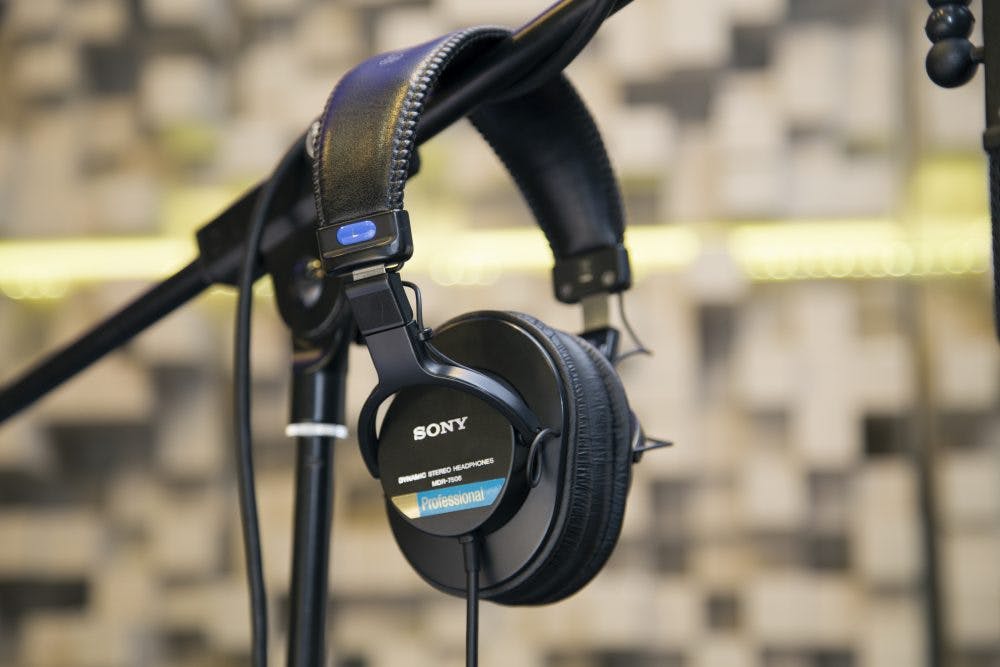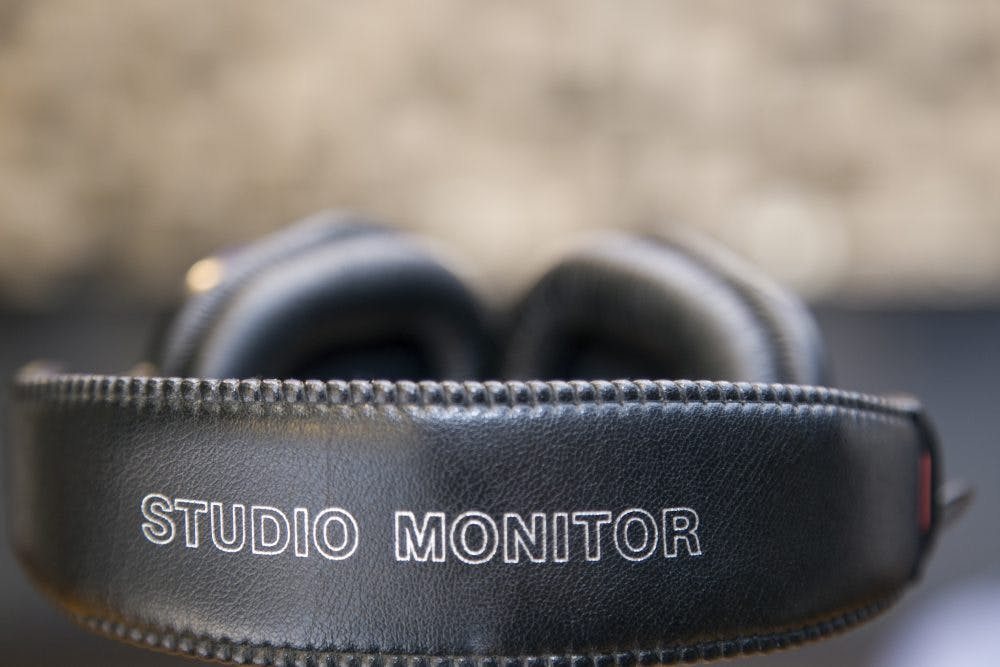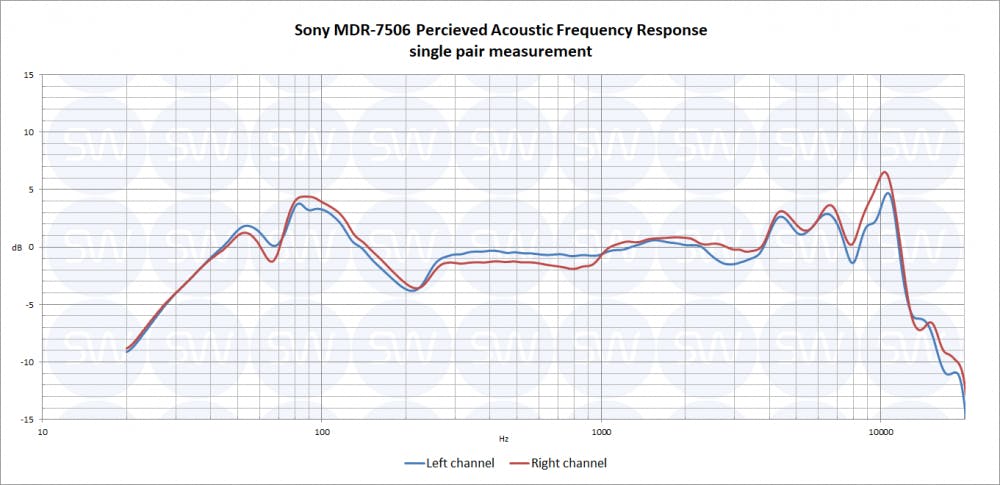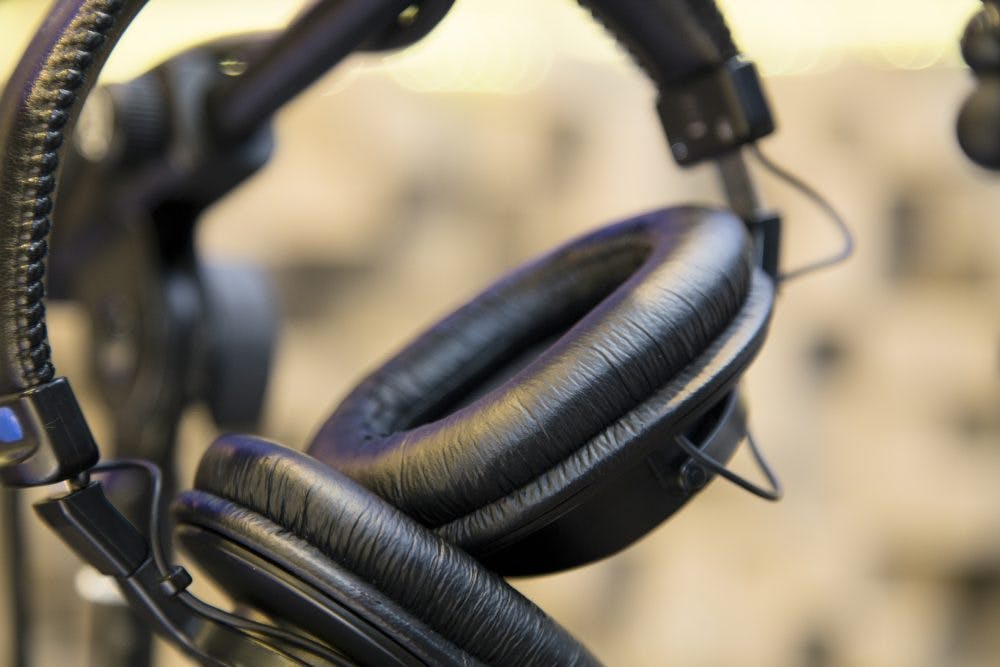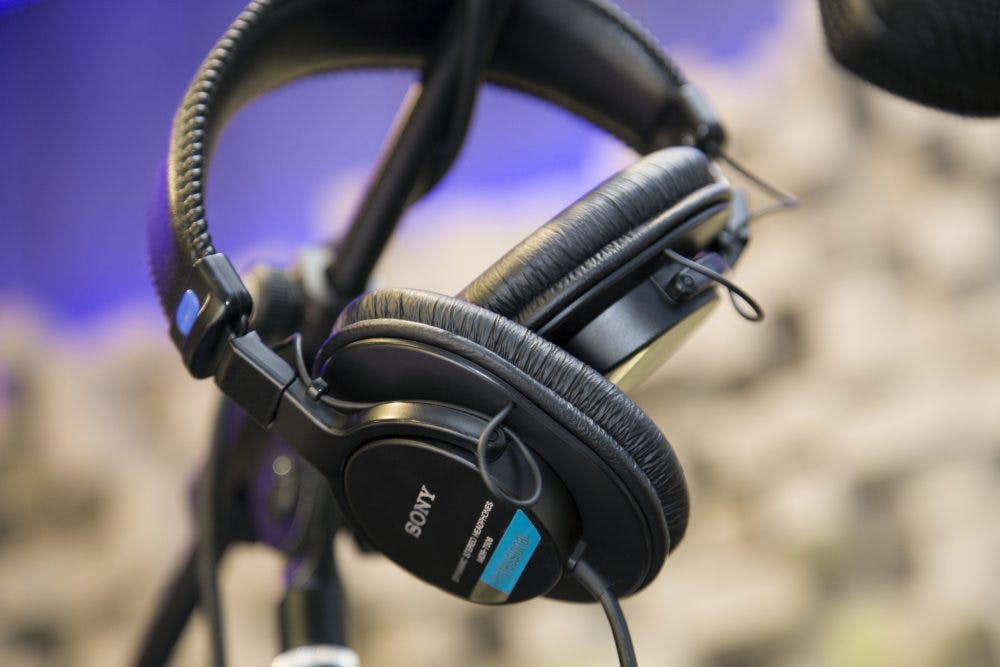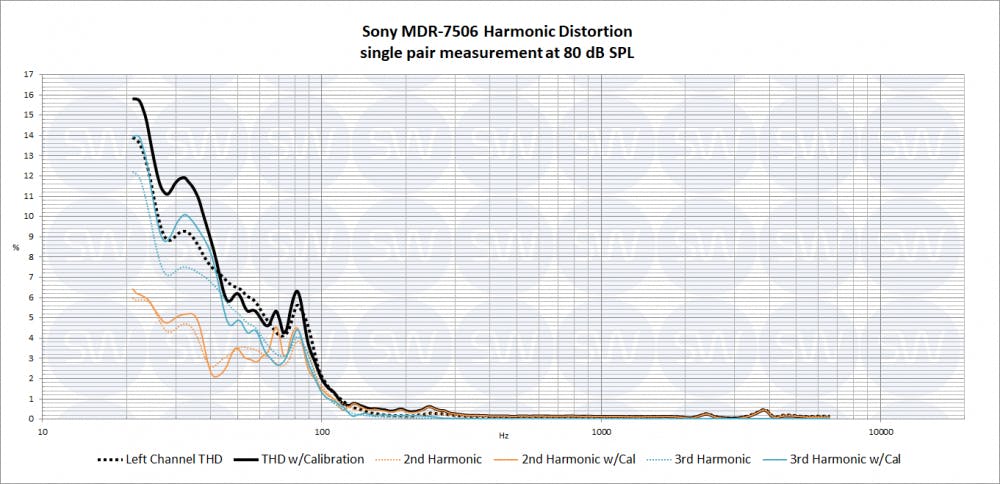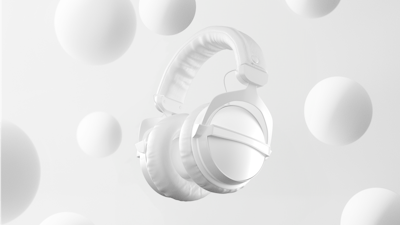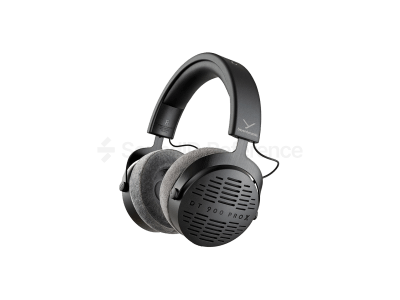Sony MDR-7506 has been around for ages. The model is celebrating its 30th birthday in 2021, but the design is even older than that. MDR-7506 previously was called MDR-V6, so in truth, these headphones are entering their 36th year! And what’s even more amazing – they have enjoyed massive popularity throughout their entire lifetime. Even today they are among the best-selling pro headphones out there! So is this dinosaur still relevant and should you be considering it for studio applications?
- Good comfort for closed-backs in this price range
- Good adaptiveness
- Fairly smooth frequency response
Pros list with SoundID Reference calibration
- Increased extension in both low and high end of the spectrum
- Neutral sound
- No detachable cable
- More recent headphones have better builds
- The high THD in the bass adds coloration
- Channel balance issues are common
- Earpads start to peel prematurely
MDR-7506 can easily surpass safe listening volume levels when driven from a laptop’s built-in soundcard, even with Sonarworks calibration enabled. There is no scenario where these old Sonys would fail to deliver sufficient volume, regardless of the device you’re plugging them into.
This is the department where MDR-7506 age becomes apparent. While Sennheiser HD 25, despite being nearly the same age, looks and feels fairly current, MDR-7506 materials and design are unmistakably 80’s. However, the construction has proved itself sturdy across decades as many pros swear by MDR-7506 reliability. The ear pad lifespan is limited though as the coating starts to peel off sooner than one might expect. Another drawback is the un-detachable cable, so when it fails you’ll need to either solder a new cable or look for new headphones.
As with many single-sided cable headphones, the connection between both channels is secured using a tiny wire with large parts of it being exposed, making it vulnerable.
When comparing the nearly all-plastic build to nearly all-metal Beyerdynamic DT 240 Pro, the difference in materials feels generations apart. The fact that DT 240 Pro’s are about 20% less expensive than MDR-7506 just adds salt to the wound.
Over the years there have been plenty of engineers who have described the MDR-7506 sound as neutral. Despite the 100Hz and 4 – 10kHz boosts these classic Sony’s indeed are fairly flat, especially when compared to most of their rivals. MDR-7506 greatest strength is the consistent mid-range where no abrupt spikes nor dips are present, also the boosts on both ends are rather smooth, with very few resonances that are not particularly obtrusive. All these characteristics combined, form the predictable and neutral sound that they are famous for.
However, the sub-bass and especially the very top end (10kHz and up) are lacking. That wasn’t much of an issue in 1985, but today there’s plenty of genres where these drawbacks will be a major obstacle to delivering modern mixes and productions.
This is another characteristic that shows the MDR-7506 age. Left-to-right inconsistencies of 5dB in the lower spectrum are not uncommon. The same can’t be said for more modern rivals such as the DT 240 Pro or Audio-Techinca’s ATH-M20x and ATH-M40x.
Some issues may come up in the rest of the spectrum as well, however, they rarely cross the threshold of audibility.
Most of our testers find them to be very comfortable and suitable for long sessions. This might be one of the reasons that have helped MDR-7506 to stay popular for such a long time. Few testers reported pressure points and weren’t excited to wear them for extended periods, but the vast majority gave high praise to MDR-7506 in this category. Nevertheless, you should listen to no one when it comes to comfort and always try out headphones yourself as it’s highly subjective.
The channel balance problems drag the value rating down. For a high score here, they should cost about half of what they do now.
Audio-Technica ATH-M20x are somewhat similar in build quality but have a more neutral frequency response and you can get two of them for the price of one MDR-7506.
And once again I have to bring up the DT 240 Pro. While the Sonys are more neutral without calibration and on average our testers find them to be more comfortable, in all other aspects these Beyers are superior.
As the graph shows, the low end is not the cleanest. The high THD is dominated by the 3rd harmonic distortion, which is bad news. There are headphones with similar THD figures composed of 2nd harmonic distortion that cause no audible issues, but it’s not the case with MDR-7506. You don’t have to drive them especially loud to notice a subtle coloring added to the sub-bass, and, unfortunately, after calibration, this issue becomes even more prominent.
How accurate and consistent is the correction effect among different listeners?Adaptiveness is great for closed-back headphones and generally, these headphones will sound nearly the same for everyone, thus making them an adequate choice for collaboration (as long as you are lucky and get pairs without left-to-right channel inconsistencies).
How much do they differ pair to pair in terms of frequency response?MDR-7506 is not the worst offender in this department, but the consistency certainly is not the best. The largest spread among the pairs is in the lower part of the spectrum, from 200Hz down. Unfortunately, this means that the MDR-7506 bass response can be a few dB’s too much or not enough when used with the model average calibration profile.
Inconsistencies in the rest of the spectrum are not greater than its rivals and shouldn’t cause issues.
Rating
Conclusion
If Sony can find buyers for MDR-7506 even after 30 years since its release, clearly they must be doing something right? Or maybe the “industry standard” cult status of MDR-7506 is so deeply rooted that it doesn’t even matter if they’re still a good choice or not? Perhaps both statements hold some truth. MDR-7506 can still hold their own when it comes to comfort, but the drivers show their age. While their frequency response could be described as exceptionally neutral some time ago, nowadays some headphones offer flatter frequency response and way lower THD. Besides, the channel inconsistencies are more common than any of its rivals and the price is rather high for what MDR-7506 has to offer. However, regardless of their shortcomings, most find them easy to wear for long periods of time so they’re worth considering for use-cases where comfort plays a more important role than sound accuracy, i.e. broadcasting, podcasting, and some tracking.
Continue reading our review of Sony WH-1000XM3 here or explore the rest of our headphone reviews here.
You can also send in your Sony headphones for individual calibration. More details can be found here.
Final Rating
Calibration Enabled
Calibration
